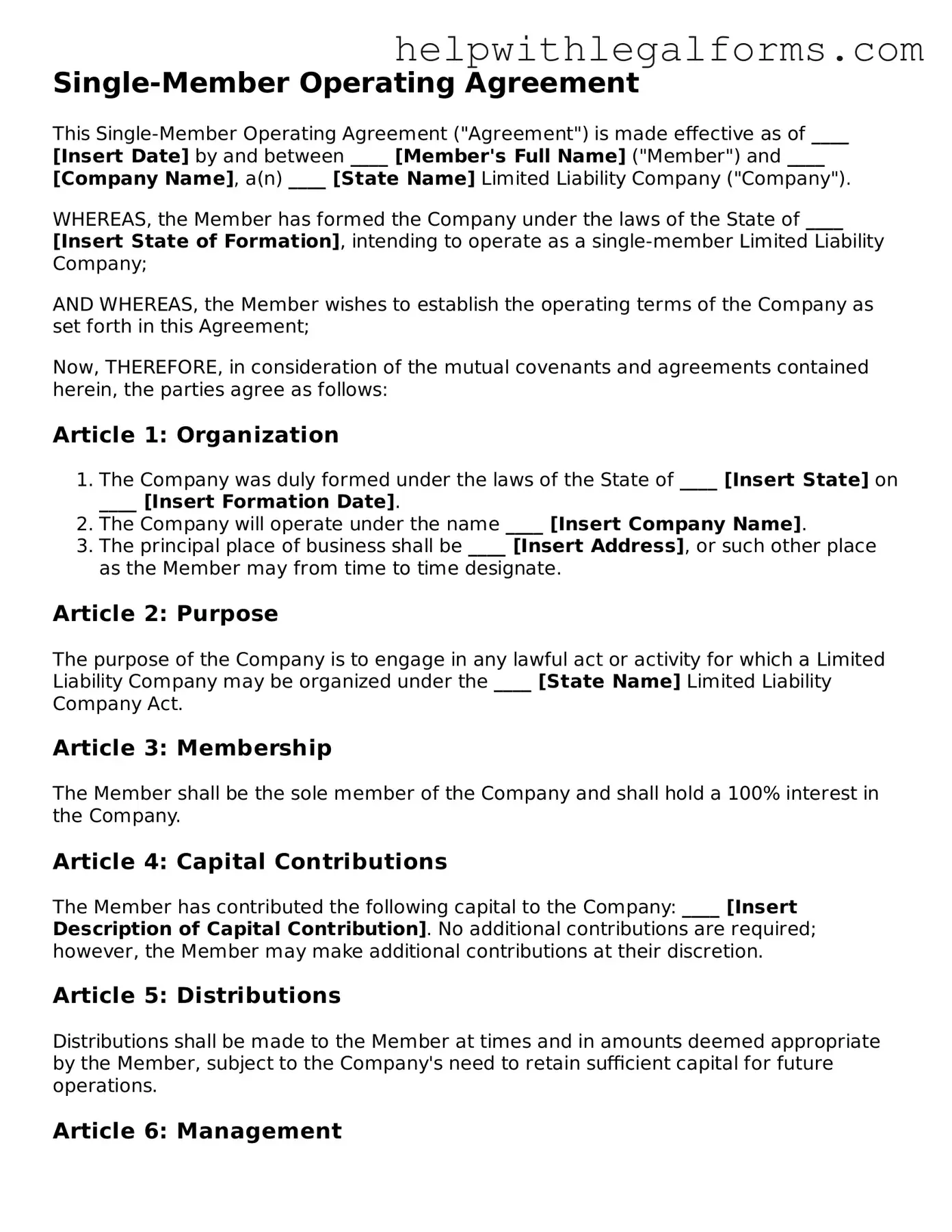Single-Member Operating Agreement
This Single-Member Operating Agreement ("Agreement") is made effective as of ____ [Insert Date] by and between ____ [Member's Full Name] ("Member") and ____ [Company Name], a(n) ____ [State Name] Limited Liability Company ("Company").
WHEREAS, the Member has formed the Company under the laws of the State of ____ [Insert State of Formation], intending to operate as a single-member Limited Liability Company;
AND WHEREAS, the Member wishes to establish the operating terms of the Company as set forth in this Agreement;
Now, THEREFORE, in consideration of the mutual covenants and agreements contained herein, the parties agree as follows:
Article 1: Organization
- The Company was duly formed under the laws of the State of ____ [Insert State] on ____ [Insert Formation Date].
- The Company will operate under the name ____ [Insert Company Name].
- The principal place of business shall be ____ [Insert Address], or such other place as the Member may from time to time designate.
Article 2: Purpose
The purpose of the Company is to engage in any lawful act or activity for which a Limited Liability Company may be organized under the ____ [State Name] Limited Liability Company Act.
Article 3: Membership
The Member shall be the sole member of the Company and shall hold a 100% interest in the Company.
Article 4: Capital Contributions
The Member has contributed the following capital to the Company: ____ [Insert Description of Capital Contribution]. No additional contributions are required; however, the Member may make additional contributions at their discretion.
Article 5: Distributions
Distributions shall be made to the Member at times and in amounts deemed appropriate by the Member, subject to the Company's need to retain sufficient capital for future operations.
Article 6: Management
The Member shall have sole authority and control over all decisions related to the Company and its operations. The Member may designate agents or employees to perform certain tasks under the direction of the Member.
Article 7: Dissolution
The Company may be dissolved at any time with the written consent of the Member. Upon dissolution, the Company's assets shall be distributed first to satisfy any liabilities, and the remainder, if any, to the Member.
Article 8: Amendments
This Agreement may be altered, amended, or repealed only by the written consent of the Member.
Article 9: Governing Law
This Agreement shall be governed by and construed in accordance with the laws of the State of ____ [Insert Governing State] without regard to its conflict of law principles.
IN WITNESS WHEREOF, the Member has executed and adopted this Single-Member Operating Agreement as of the date first above written.
Member: ____________________________________
Name: ____ [Member's Full Name]
Date: ____ [Insert Date]
